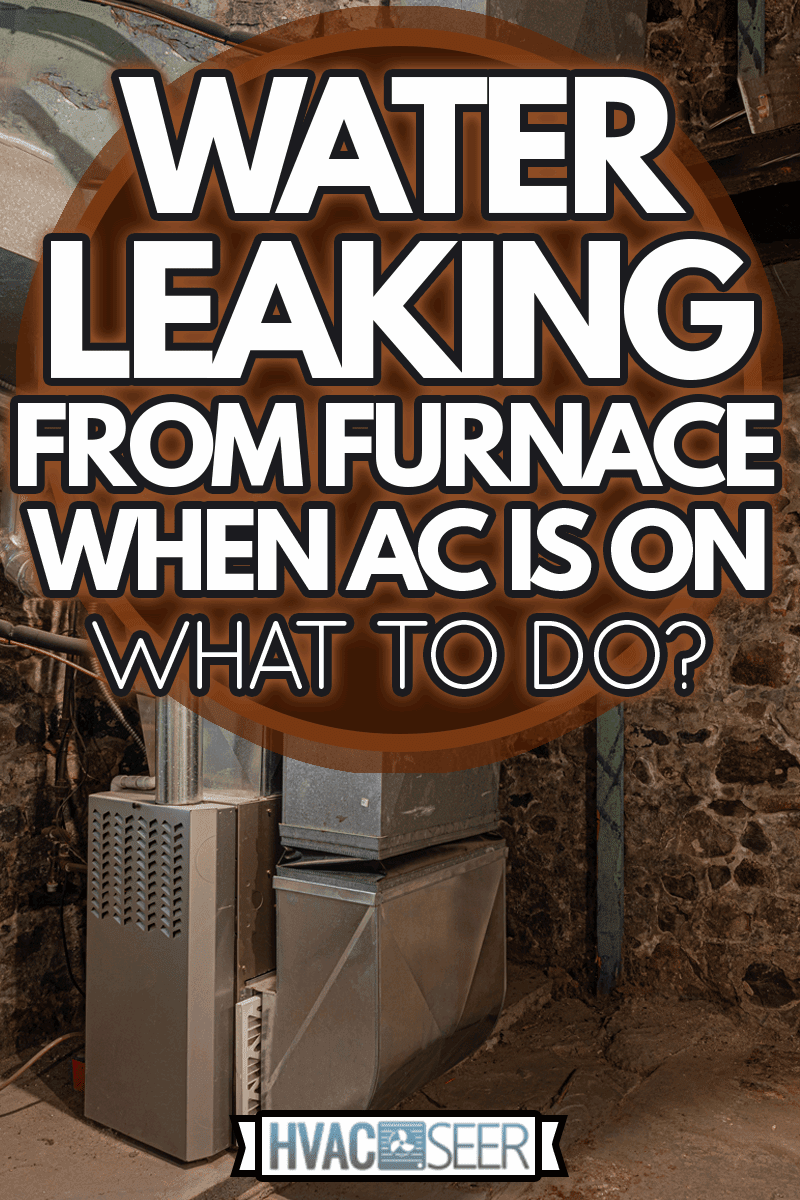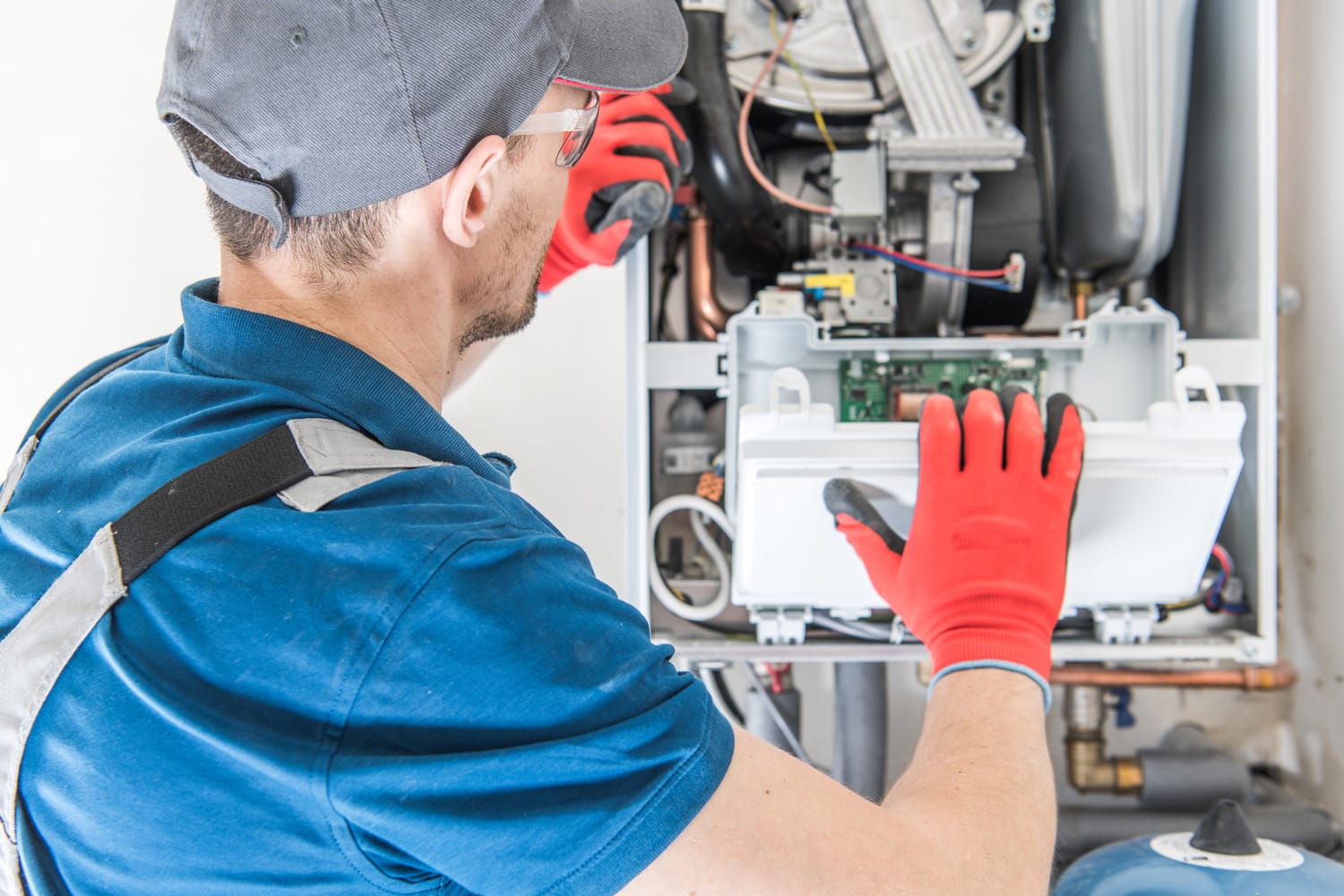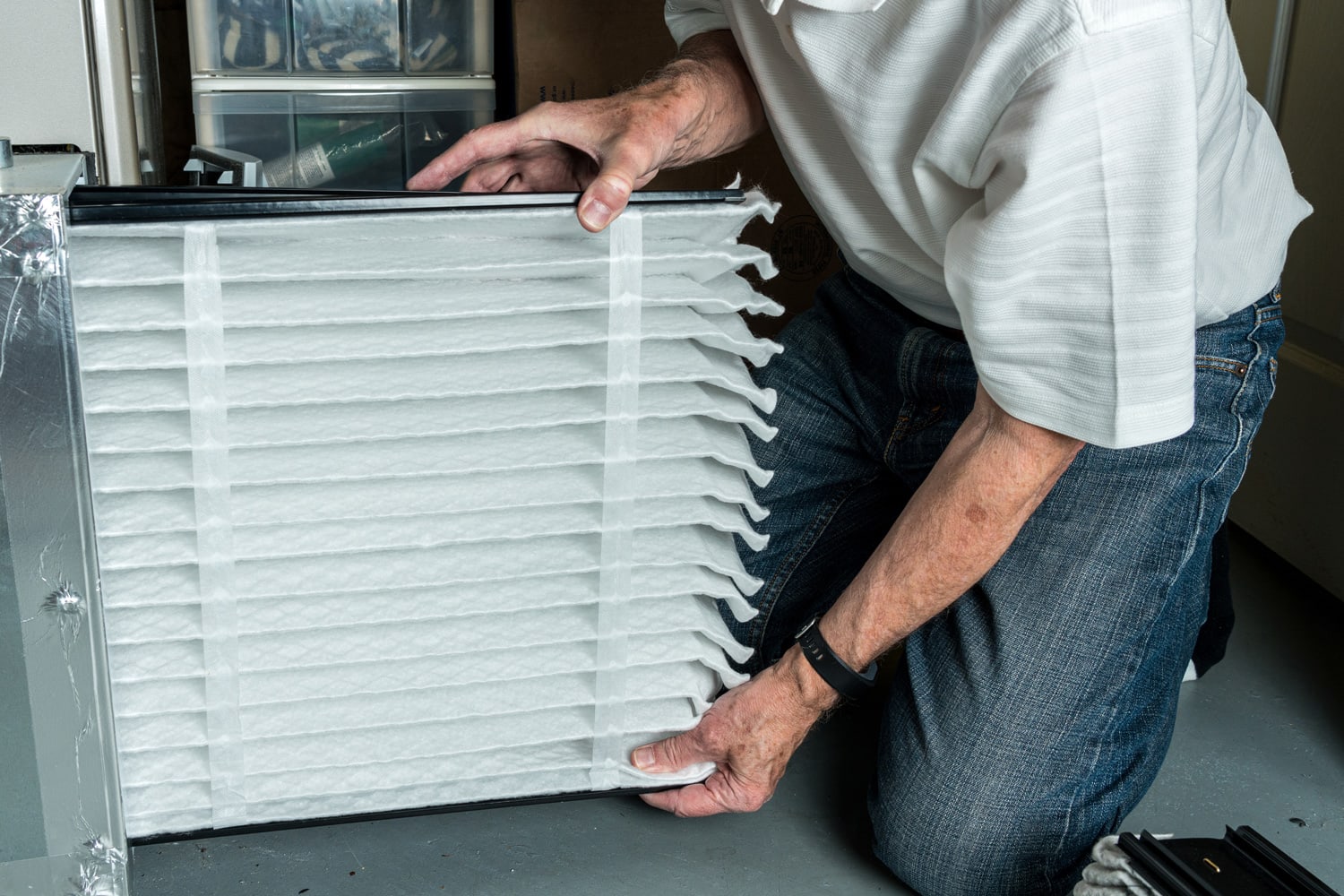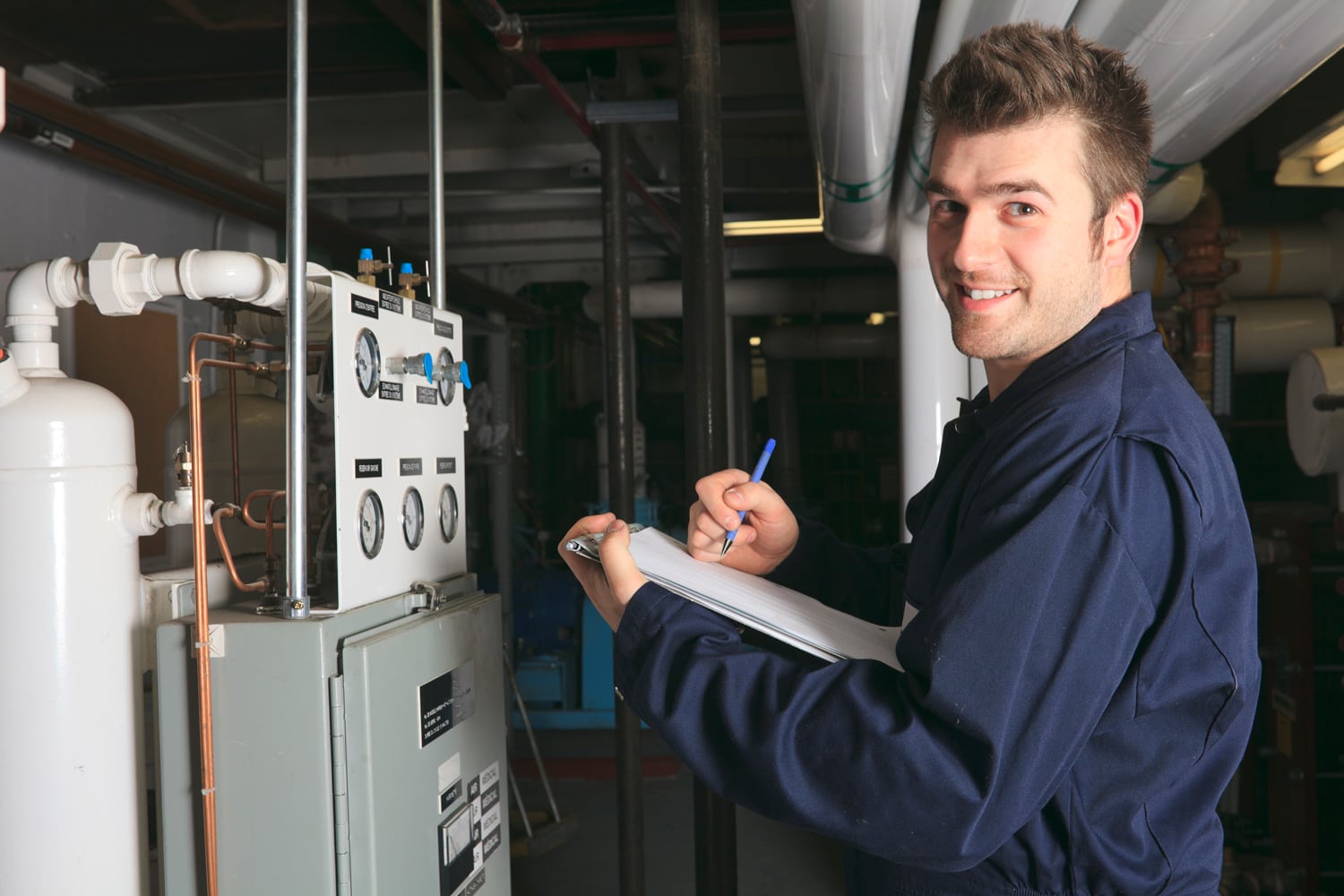When your air conditioner is on, you may think everything is fine. But, what if you notice water leaking from the furnace when the AC is running? Are you wondering how you can resolve this? We talked to the experts, and this is what we learned.
Often, the furnace may leak when the AC is on because of a blocked drain. To address this problem, take the following actions:
- Switch off the system.
- Wipe up stagnant water.
- Inspect the drain and the drain line.
- Probe the evaporator coils.
- Check the drain pan.
- Call an HVAC technician.
You'll want to continue reading to learn why your furnace is leaking water when the air conditioner is on. We will also address furnace maintenance needs and tackle whether you can mix AC and furnace brands. Without further ado, let's dive right in.

Furnace Leaking Water When The Air Conditioner Is On

A furnace leaking water can trigger panic, because it can cause water damage to the floor, the carpet, and wooden structures. But a leak is not always a sign of a significant problem with the AC or the furnace.
Sometimes, re-aligning the drain line may resolve the problem. Still, you may need a technician to check the issue and address it at other times.
Your furnace may leak water when the AC is on because of these reasons.
Causes
The Drain Line is Loose
Besides cooling your home, your AC also dehumidifies your abode by drawing moisture from the indoor air. The AC system gets rid of this moisture by ejecting it via the condensate drain line.
Sometimes, the location of this drain line is near the furnace. Thus, you may notice water under the heater when it becomes loose.
Clogged Drain
When the AC drain becomes clogged, the condensate generated during the cooling process backs up and eventually leaks. You may notice stagnant water or water damage around your appliances. The plaster or drywall may crack, and the paint may become bubbly.
What's more, the clogged drain may cause the air around your furnace and AC to become moldy and musty. Often, moldy odors are noticeable before water spots appear.
Clogged drains also make your AC inefficient because it cannot cool your home. Also, the AC may shut down and won't come on again.
Cracked Drain Pan
The moisture removed from indoor air collects in the drain pan before it is eliminated via the drain pipe. Some ACs have primary and secondary drain pans, while others only have a primary drain pan. Often, the primary drain pan is attached to the coils.
If there is a crack on the pan, the condensate may flow down the inside of your appliance, causing the furnace to leak water when the AC is on.
Defective Evaporator Coils
An evaporator coil draws heat from indoor air. It works with the condenser coil to perform the heat exchange process and generate cool air in the home. Often, the evaporator coils are mounted on the furnace. But you may also find the coils in the air handler's interior.

Since these coils are susceptible to freezing up, they may malfunction, causing the AC to be inefficient. Dirt accumulation on the coils, insufficient airflow in the system, or refrigerant leaks may cause the evaporator coils to freeze.
When the evaporator coils are defective, they can generate a lot of humidity during the cooling process, causing the furnace to leak water.
Diagnosing The Leaks
1. Turn Off The System
It is best to power off your HVAC system when you notice a leak. Switching off the system will protect your appliances from further moisture-related damage. Also, this is a necessary safety measure to protect yourself, or a technician when doing an inspection to figure out the cause of the leak.
You can switch off the system from the thermostat or via a switch on or next to the furnace. If you cannot locate the button, turn the system off from the fuse box.
2. Wipe The Stagnant Water
Ensure that your furnace's electrical circuit is off before wiping up water to avoid electrocution. Use towels and napkins to dry pooled water. You can also suck up a puddle with a wet vacuum.
3. Inspect The Drain and the Drain Line
Check whether the drain line is aligned to the AC's output correctly. If detached, secure it to form a tight seal to avoid more leaks.
Also, inspect the drain line for blockages. If clogs interrupt the condensate's free flow, use compressed air to push them out. You can also suction out the debris with a wet vac or buy drain cleaning tablets to help eliminate the blockage.
Pour clean water through the drain to test whether you have successfully removed the blockage. This test will also enable you to determine whether you have secured the drain line well by observing whether there are leaks on the floor.
4. Probe The Evaporator Coils
Inspect the evaporator coils for ice build-up. If the coils are frozen, keep the AC off to give the frozen coils ample time to thaw out. The ice can take up to 24 hours to melt completely.
Also, check whether the air conditioner filters are clean. Dirty filters hinder proper airflow. Cleaning or replacing the filters will enhance adequate air circulation in your AC system.
You can ask an HVAC technician to inspect the coils for damage that would allow refrigerant leaks. The technician can repair the damage, carefully clean the coils, and recharge the refrigerant.
5. Check The Drain Pan
Thoroughly clean the drain pan and inspect it for cracks or rust damage. You can use a sealer to repair tiny cracks on the drain pan. However, it is better to replace a rusty drain pan rather than repair it.
Work carefully to avoid damaging the coils attached to the drain pan. The coils are very delicate; handle them with care.
6. Call an HVAC Technician
Have a trained eye check your HVAC system and tune up all minor defects in the system. Resolving issues promptly, protects your furnace's heat exchanger and internal electrical components from rust damage.
Rust not only wears out the components of your furnace but also increases inefficiencies. And that may eventually lead to frequent breakdowns. You end up incurring costly repair costs.
What Maintenance Does A Furnace Need?

Proper furnace maintenance ensures that your HVAC system heats your home when you need it most. It reduces the rate at which your unit wears out, improving its life expectancy. Regular maintenance also ensures that your appliance operates efficiently, keeping your heating bills more manageable.
Tuning up your furnace before the heating season kicks in ensures that it works optimally when the cold hits. It is wise to address minor issues before the system unexpectedly breaks down.
Clean The Furnace
Cleaning the furnace maintains the appliance's efficiency and reduces fuel wastage. It also helps keep the indoor air in your home cleaner.
Inspect The Carbon Monoxide Detector
Furnaces that burn fuel produce carbon monoxide as a by-product. Although the gas is odorless, it is highly toxic and can be fatal if you inhale enough. So, ensure that your carbon monoxide detector works properly.
Assess The Safety Shut-Off Components
The flame sensor prevents gas leaks by halting gas flow if it doesn't detect a flame. A dirty flame sensor may make it so the furnace us unable to turn because it cannot sense a flame. Cleaning it keeps the sensor in excellent shape.
The furnace limit switch stops the furnace from overheating by shutting off the furnace blowers and burners if the unit heats up. The furnace may also have a flame rollout switch that disconnects the control switch circuit when the airflow is low, triggering the gas valve to close.
Proper maintenance ensures that the switches stay in optimal working condition.
Check The Filters

Filters trap dirt and other debris, barring them from entering the furnace. You should change these filters regularly, so they work optimally, and to prevent your furnace from malfunctioning because of inadequate airflow.
Inspect The Thermostat
The thermostat detects room temperature and triggers different furnace reactions in response. Thus, make sure the thermostat works correctly, so your system can create a comfortable living space during the cold season.
Can You Mix AC and Furnace Brands?
Although we recommend you buy units from the same brand, an air conditioner and a furnace with different manufacturers still work well together. Ensure that you size the blowers and the coils appropriately when purchasing the units.
Schedule a visit with an HVAC professional for an assessment and recommendations of suitable HVAC systems for your current system and ductwork. A professional should be able to tell you the best model to pair with your current working heating or cooling appliance.
Even though buying different brands may be cheaper, you may reduce a unit's efficiency and capacity, resulting in higher energy bills. This is because manufacturers test their appliances to work as seamlessly as possible.
Closing Remarks

Address furnace leaks as soon as they appear to prevent costly repairs and further damage to your appliances and home. If the issue persists even after troubleshooting your HVAC system, you may need to replace the system.
Proper furnace maintenance helps your unit serve you safely and efficiently. Also, by matching your furnace and AC brands, you maximize efficiency and reduce the running costs for appliances.
These topics may interest you:
